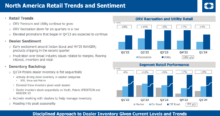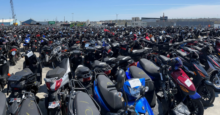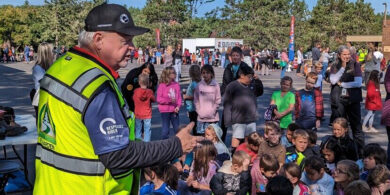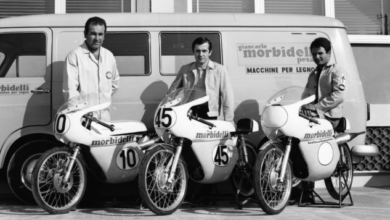May 4, 2009 – Industry Leader: Brian Etter, Motorsport Aftermarket Group
Motorsport Aftermarket Group (MAG) continued to grow its industry presence in 2008, acquiring two aftermarket manufacturers to bring its total businesses to 10. The privately owned company, headquartered in Irvine, Calif., also grew its revenue, both through its core business and its acquisitions, said Brian Etter, MAG’s CEO. Etter leads a company that includes some of the aftermarket’s biggest brand names, including Kuryakyn, Vance & Hines and Progressive Suspension.
What’s the biggest challenge for the industry and what should be done about it?
Brian Etter: I believe our biggest challenge is the accelerated changes in the regulatory environment. It’s getting to the point where it’s difficult to go a full day without reading or hearing about some proposed change or update on a change, everything from emissions, sound, safety, lead paint, recent reductions in open available space to ride. What it feels like to me, and people I talk with, is that because they (the regulation changes) can be so technically oriented, you can get overwhelmed. And if you don’t take the time to stay up to speed, it’s this natural tendency to put it aside and hope somebody else is doing something about it. So for me and for (MAG), we’re trying to take a much more active, involved role and trying to stay up to speed with the major proposed changes. We’re trying to provide feedback. Often times it’s educating, explaining our perspective. A lot of what gets initially proposed is based on a political view or a lobbyist view that doesn’t have all the facts or clearly isn’t looking out for our industry’s best interest. Many times it is just pure education and staying relentless on the feedback. A great organization for us has been working with the Motorcycle Industry Council. They’re looking out for our interest, but they’re also in need of support because of the accelerating amount of change.
What’s been the biggest challenge in your current position, and how have you dealt with it?
For me personally in helping lead our group of businesses, it’s maintaining positive momentum and morale in a down economic market. It’s been very challenging. We are trying very hard to find that right balance between investing, trying new things and taking some risks while at the same time having to be close to details and reducing our costs. Too much of either of those can be bad for the long term. It can be easy to act as though there isn’t a challenge or a problem and just continue to operate your businesses like you did in the past, in which case you can go broke. It’s also easy to — and we’re seeing too many businesses go to the other side of the spectrum — cut too much and be too cautious and miss opportunities. And those opportunities can pass by and be damaging to the business. So for us, we’re trying to find that balance and there’s no magic answer other than to try to keep the momentum and morale up. We work very hard and manage it and talk about it on a daily basis. The first thing we do is set realistic goals and objectives. We then measure our performance against those goals and we celebrate the wins and not just hammer on the misses. The third thing is we’re not reluctant to make changes. A plan that may have made sense six months ago looks entirely different today. So you need to make realistic goals, you need to measure yourselves and you need to share the successes, if they are appropriate. The last thing for us is try to overcommunicate. One of the big challenges is assuming your team knows what’s in your head and what you’re thinking. There’s such a high level in uncertainty and concern that what works well for us is continually reaffirming where we’re going, talking about the challenges, soliciting the feedback from the team as far as what adjustments to make and then getting out and doing it.
What’s the best advice you can give to others in the industry?
I know it’s going to sound very cliché, but staying focused on your customers is incredibly important and it’s something we remind ourselves here everyday. Rather than just say customer service, one way we try to look at it is,to view our business from the eyes of our customers. Then, more importantly, is being willing to make the necessary changes to help address whatever their needs are. It’s easy and safe to operate the same way today as you did yesterday, the same way you did the day before that. The problem is over time you start developing ruts. You’re running around the track and you’re taking the same line and you start developing ruts and pretty soon, it’s hard to stay out of them. And eventually you might crash. View yourselves externally just as your customers do and adapt. Overall, what we’ve learned is that we need to do a better job of keeping up with the changing environment. In this past year, the preowned bike market really took off and it has a specific demand on parts and accessories. So we’re working hard to keep up with that. There’s a need for better-trained service and sales support and we’ve also recognized at the dealer level there’s true importance of merchandising support and having product availability. Those aren’t easy to address. There’s no magic answer. Part of the solution is being aware and trying new things to see what works.








